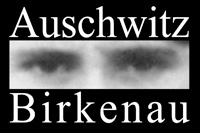




SS Garrison
The size of the Auschwitz SS garrison rose systematically as the number of prisoners increased and consisted of about 700 SS men in March 1941, 2,000 in June 1942, almost 3,000 in April 1944, and 3,342 in August. It reached its peak of 4,480 SS men when it was strongly reinforced just before evacuation in January 1945.
SS men were sent to Auschwitz from concentration camp garrisons, regional SS replacement commands, and Waffen SS divisions. Many of them were transferred after some time to other camps or front‑line units; overall, there was twice almost a complete turnover of the camp garrison. Initially, Germans and Austrians predominated among the SS, along with “ethnic Germans” from the Sudetenland, western Poland, and later increasing numbers of Volksdeutsche from Yugoslavia, Hungary, and Romania. The educational level was low—over 70 percent of the SS men had attended only a few years of public school, and a mere 5 percent, mostly doctors and camp construction board engineers, had higher education.
The SS men had a hospital, rest and recreation center and military facilities including a shooting range at their disposal; they also had their own mess facilities. Rank‑and‑file SS men were billeted in barracks. Officers lived with their families in houses in Oświęcim whose prewar residents were expelled.
Among the 8,000 SS men who served in Auschwitz while the camp was operating, only about 10 percent were ever tried after the war.
